Yvonne Escalante: Forging Tradition from Maize to Mace
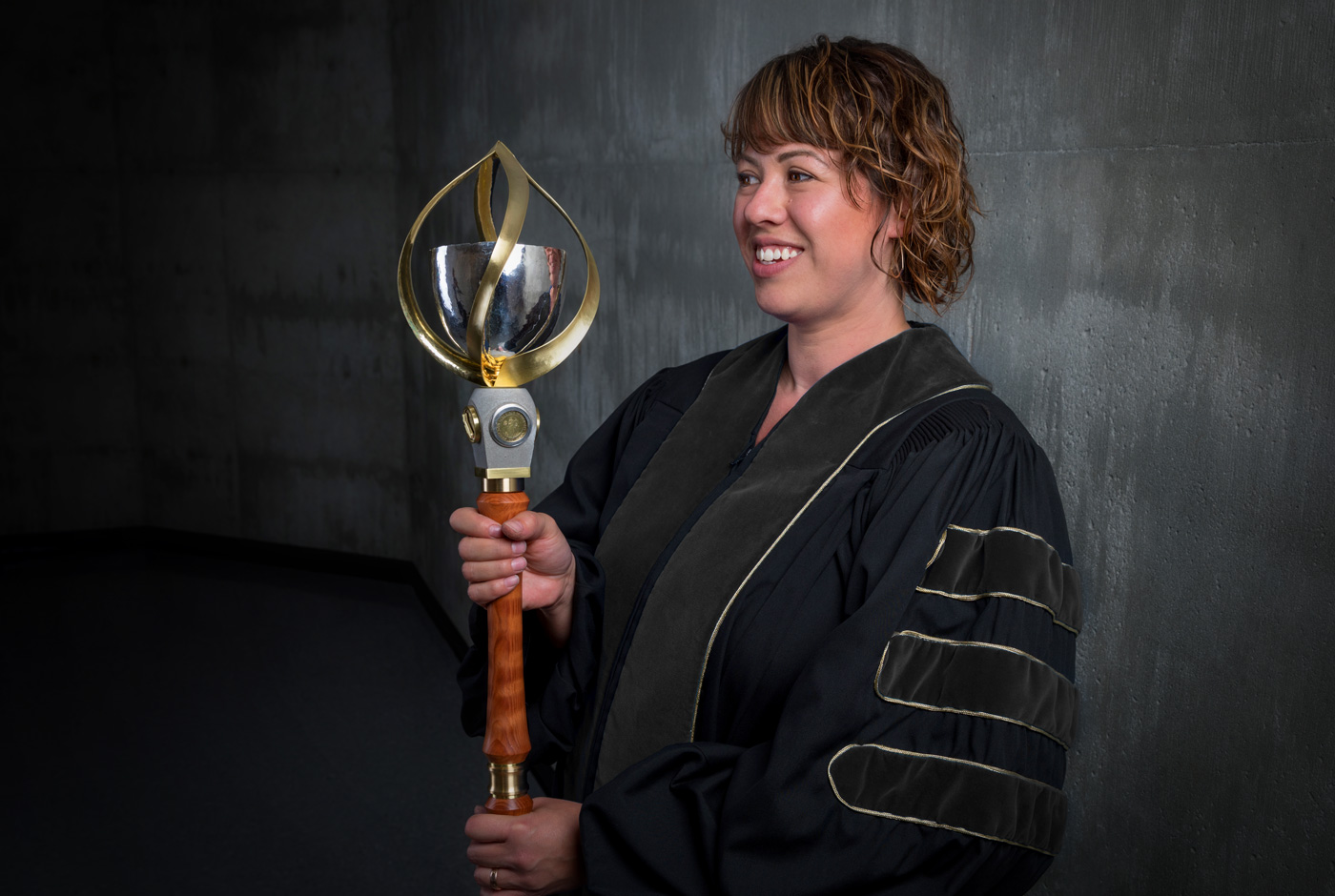
Photo: David Schmitz
A master craftsman named Leonidas Pratt poured corn, wine and oil on the first foundation stone of San Jose State’s first campus building, declaring it “well formed, true and trusty.” Yvonne Escalante, ’13 MFA Spatial Arts, considered that momentous day in 1870 and other elements of SJSU history when she set out to design and create the university’s new ceremonial mace. Her philosophy as a craftswoman and SJSU Art and Art History lecturer also helped to shape the meaning of this new piece of SJSU history.
Growing up, Escalante’s grandfather would tell stories about the family’s Iowa farm—rows upon rows of corn that connected generations of her mother’s family. When large, industrial agriculture corporations wanted to come in and alter their traditional way of farming the land, the family decided to leave it all behind and move to California. Her father’s side of the family immigrated from El Salvador but, she says, “we didn’t talk about that kind of tradition.”
“What is important to me as an artist and educator is allowing these traditions to live on.”
Escalante longed for a way to connect with that part of her heritage. After the passing of her grandfather and her father, an aeronautical engineer who painted and “played every instrument he put his hands on,” she decided to explore her family’s heritage and create that connection through her art. Her investigation into corn, agriculture and farming practices ultimately would become the foundation of her San Jose State MFA thesis and an inspiration for her art.
“I thought it was interesting that corn was kind of this great unifier. It’s this original, ancient grain,” she says. “It became a symbol of both sides of my family—and my story, my history. It also tied into so many stories about the big ‘us.’ I thought it was a potent symbol.”
Escalante’s music box, “Reconstructing Time,” allows her grandfather and father to “speak” with a musical language based on how they each ate corn on the cob. Likewise, Escalante’s work on San Jose State’s ceremonial mace provides a way for generations of university alumni to connect through another artwork. The mace’s elements tell the story of the university’s history and the journey of each student toward graduation.
As a traditional object that opens the commencement ceremony, “it is celebrating the procession and the students who make the university what it is,” says Escalante. “It also embodies how the university community works together to help students reach the culmination of their journey.”
The mace is also an opportunity to educate people on her craft because “craft brings tradition into this important object,” she explains. The interdisciplinary piece speaks to the variety of resources available at SJSU, which is what brought Escalante to San Jose State as a graduate student. “I’ve used the wood shop and machine shop, as well as glass and jewelry. And some elements of the mace were cast in concrete, which is not a traditional material, ” says Escalante. “It brings all of these materials and processes together, illustrating how awesome we are as an institution.”
It’s been an amazing experience to be here as an educator and an honor to have a hand in creating such an important, lasting symbol, says Escalante. “For me, it was an opportunity to go back to my roots as a metalsmith and to the roots of my own art and journey.”
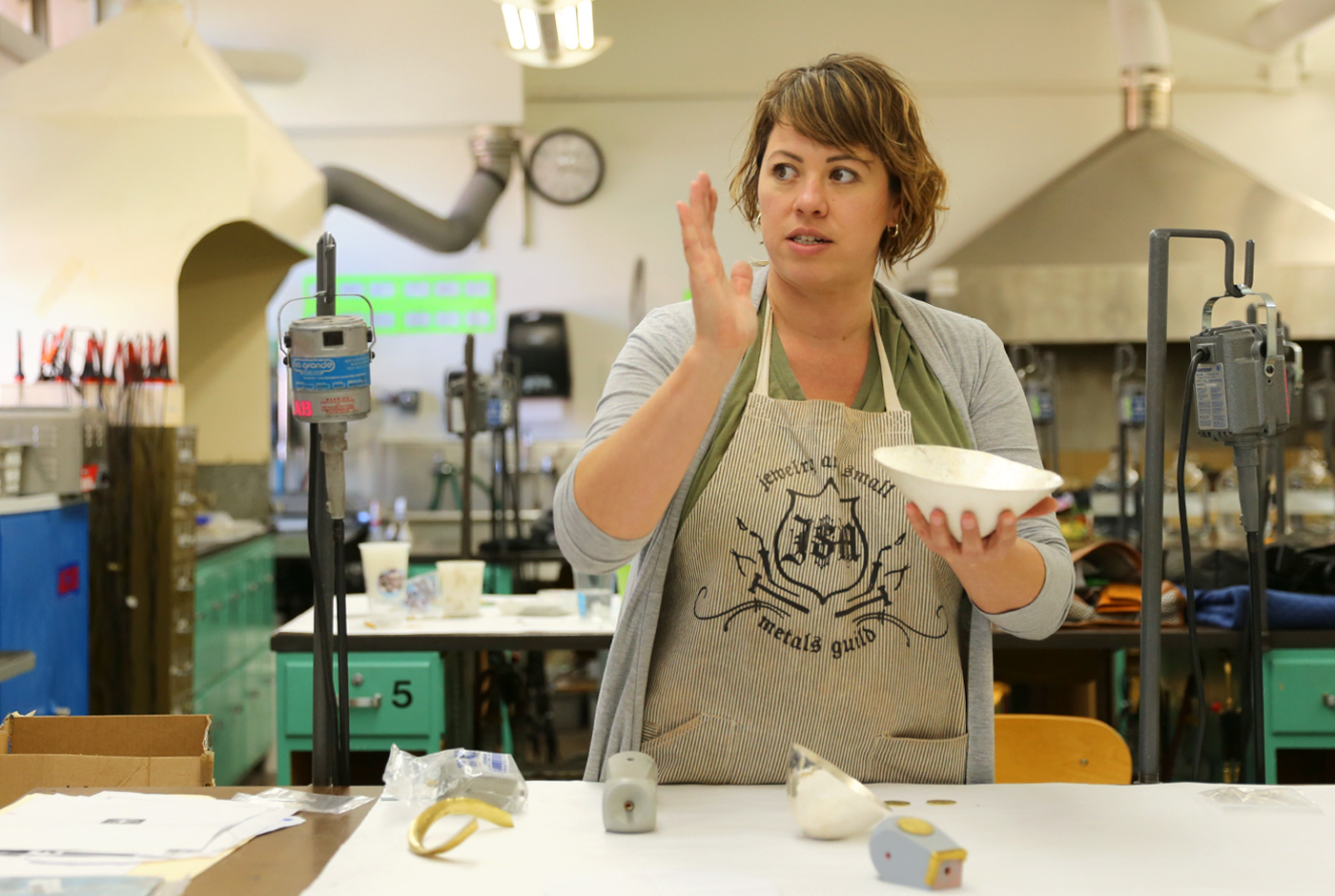
Photo: Christina Olivas
The Story of the Mace
Each part of the mace represents an element of the student’s journey and connection to the legacy and traditions of the university. Holding the mace together is the “spark,” symbolizing the individual power of each Spartan to create his or her own path and to make the world a better place.
Head
The head of the mace includes a raised silver vessel surrounded by four brass ribbons that rise from a concrete support to form a flame-like structure.
Vessel
A metaphor for the student’s journey, the creation of a raised vessel begins with a flat sheet of silver. Through rounds of forming, the edges are compressed and brought up into a bowl shape. A symbol of open mindedness, the open vessel is filled with knowledge, strength and passion. Like a student’s transformation through education, the vessel’s shape and hammered facets take time and focus to create. The texture of the vessel signifies the diverse fabric of the SJSU community.
Ribbons
In the way that education supports a student’s growth, four brass ribbons support the vessel. The ribbons twist and follow the contours of the raised vessel, reaching beyond it toward the sky, giving them an uplifting, flame-like quality. Three of the ribbons represent vox, veritas, vitas, or voice, truth, life, taken from the California State University seal. The fourth ribbon represents SJSU. A strong, rigid material that resists corrosion, brass represents education, strength and steadfastness.
Coins
The meaning of the ribbons is depicted on four coins with bezel settings. The main coin is the official San Jose State seal, and the vox, veritas and vita coins are unique interpretations of the symbols in the CSU seal. A laurel wreath unifies the coins:
- The SJSU official seal marks the front of the mace.
- The vox or voice coin represents the voice of the state and the people the CSU serves. A silhouette of California is layered with a silicon wafer, symbolizing SJSU’s innovative spirit and location in Silicon Valley.
- An open book, the veritas or truth coin represents knowledge and wisdom. The book is also a mountain landscape, evoking nearby Mt. Hamilton, and a golden bookmark ribbon becomes a winding path, representing the student’s journey.
- On the vita or life coin, a lighted lamp is the symbol of higher education. The triangular “bursts” from SJSU’s spirit mark are the eternal flame of a humble household oil lamp used in 1857. The rays of light signify both individual and community spirit.
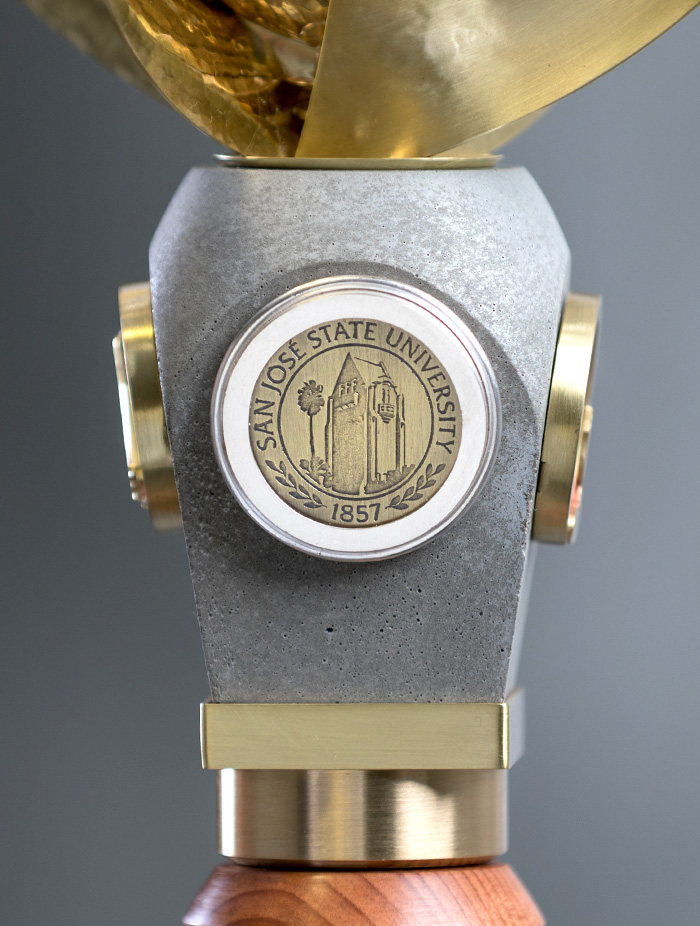

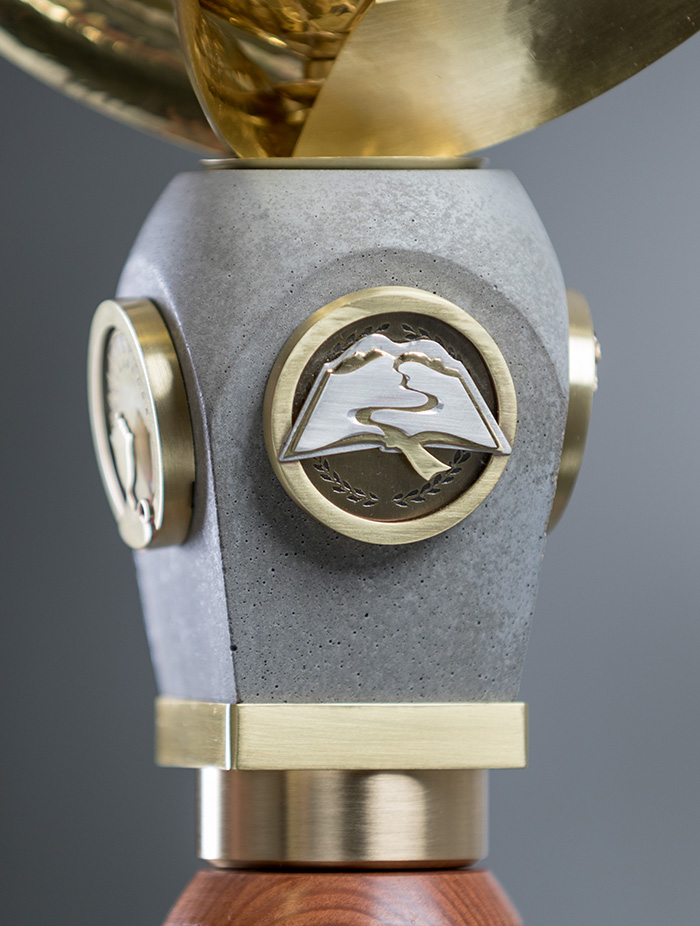
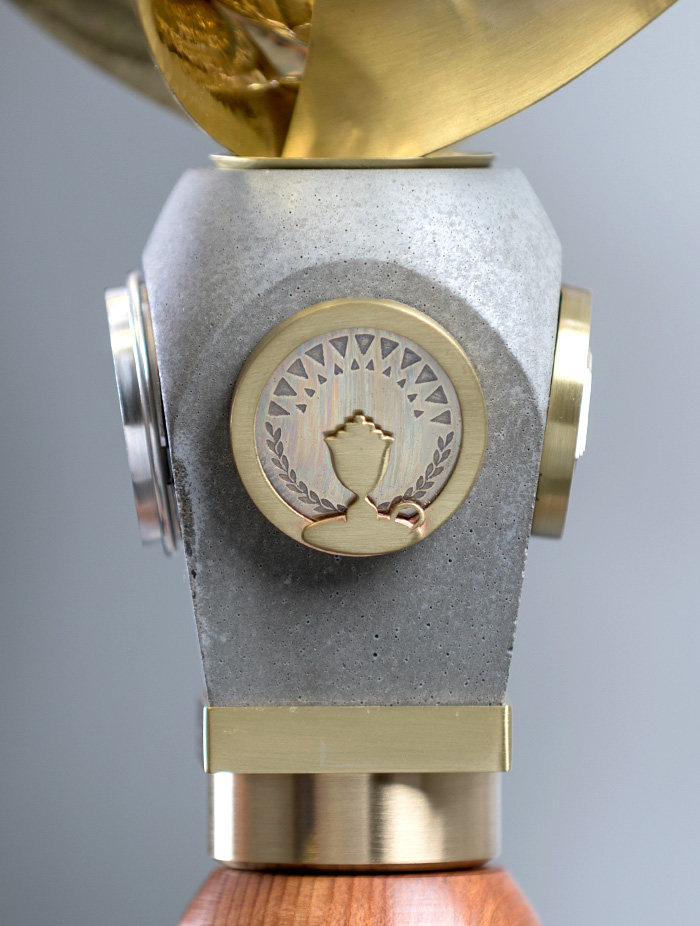
Support
The four coins are set in concrete, symbolizing the bedrock and foundation of SJSU, as well as the strength and endurance of students. The four-sided trapezoidal form flares up to meet the head of the mace and tapers downward toward the staff. In 1870, a master craftsman named Leonidas Pratt declared that the first foundation stone of the first campus building was “well formed, true and trusty.” As he described, SJSU’s foundation is strong. And it is upon this foundation that every Spartan builds.
Staff
Made of redwood, the staff is made of two 10-inch cylindrical rods joined by a brass collar. Like the California state tree, SJSU is embedded in the state’s history. Representing excellence, California redwoods are the tallest trees and giant sequoias are the most massive. The wood was sourced from a piece of ribboned redwood from a tree that naturally fell near Eureka, California, more than 100 years ago.

Photo: David Schmitz
Spark
Inside the vessel, the “spark” has both purpose and meaning. Its purpose is to hold the mace together. Made of hammered brass, it represents the internal glow and individual power that drives students throughout their journeys.


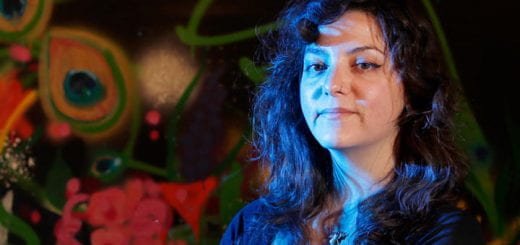


What a beautiful tradition to carry current and future SJSU graduates forward. Brava on a job well done!